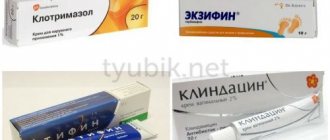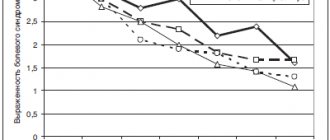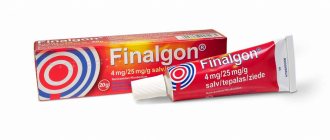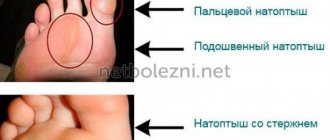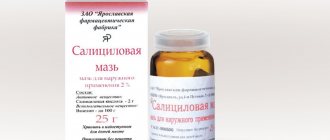Actovegin - composition and description
Under the brand name "Actovegin"
Not only injection solution and tablets are produced.
In pharmacies you can also find Actovegin gel and ointment, which differ in consistency and texture (for the gel it is transparent and light, for the ointment it is thick and white). Also, the difference between the drugs is the concentration of the active substance - deproteinized hemoderivat ( ointment - 5%, gel - 20%
).
Due to the reduced amount of the active ingredient, the ointment is more often used as an ophthalmic ointment and can be applied to other mucous membranes. The price for 20 g of cream is 220 rubles, the cost of the gel is slightly higher (it costs about 250 rubles).
The main substance is a complex of tissues and blood obtained from the body of calves. The composition of the hemoderivative is presented:
- amino acids, including vital ones;
- biopolymers glycoproteins (compounds of peptides and carbohydrates);
- nucleotides (phosphorus esters of nucleosides);
- cholesterol.
All components are natural to the human body, as they are present in its tissues. To impart the desired commercial properties, better storage and ensure the necessary consistency, a number of additional ingredients are introduced into Actovegin - propylparaben, methyl parahydroxybenzoate, preservatives, alcohol, paraffin, water.
Actovegin 5% 20g ointment for external use
Composition and release form Actovegin 5% 20g ointment for external use
Solution for infusion (in dextrose solution) - 250 ml active substance: deproteinized hemoderivative of calf blood - 25 ml (corresponds to 1 g of dry weight) excipients: dextrose; sodium chloride; water for injection in 250 ml bottles; 1 bottle in a cardboard pack. Solution for infusion (in sodium chloride solution 0.9%) - 250 ml active substance: deproteinized calf blood hemoderivate - 25 ml (corresponds to 1 g of dry weight) - 50 ml (corresponds to 2 g of dry weight) excipients: sodium chloride; water for injection in 250 ml bottles; 1 bottle in a cardboard pack.
Directions for use and doses
Dosage and method of use of Actovegin
depend on the nosological form and severity of the disease. 1-2 tablets are prescribed orally 3 times a day before meals. Do not chew the pills, wash them down with a small amount of water. For intravenous or intravenous administration, depending on the severity of the disease, the initial dose of the drug in the form of an injection solution is 10-20 ml. Then prescribe 5 ml IV slowly or IM 1 time/day daily or several times a week.
A solution for infusion with sodium chloride 20%, a solution for infusion with sodium chloride 10%, a solution for infusion 10% with dextrose is administered intravenously by drip or intravenous injection.
In case of disorders of blood supply and metabolism of the brain, initially 250-500 ml/day is administered intravenously for 2 weeks, then 250 ml intravenously several times a week for at least 4 weeks.
For ischemic stroke, 250-500 ml is administered intravenously daily or several times a week for about 2-3 weeks.
For arterial angiopathy, 250 ml is administered intravenously and intravenously daily or several times a week; Duration of therapy is about 4 weeks.
For trophic and other indolent ulcers and burns, 250 ml is administered intravenously daily or several times a week, depending on the speed of healing, in addition to local therapy with Actovegin
. In order to prevent and treat radiation damage to the skin and mucous membranes, an average of 250 ml is administered intravenously the day before and daily during radiation therapy, as well as for 2 weeks after its completion.
Rules for administering solutions Actovegin solutions for infusion with sodium chloride 20% and 10% and with dextrose 10% are intended for intravenous drip or intravenous jet administration.
Before starting Actovegin infusion, you must ensure the integrity of the bottle. The solution for infusion is administered in a dose of 250 ml. The initial dose can be increased to 500 ml. The infusion rate is approximately 2 ml/min. 10-20 infusions may be required to achieve the desired effect. During infusion, care must be taken to ensure that the solution does not enter extravascular tissue.
Indications for use Actovegin 5% 20g ointment for external use
- Trophic ulcers;
- bedsores;
- slow-healing wounds;
- cerebrovascular accidents;
- traumatic brain injuries;
- complications of varicose veins of the lower extremities;
- burns;
- corneal damage.
Contraindications
hypersensitivity to the drug Actovegin
.
Application of Actovegin 5% 20g ointment for external use during pregnancy and breastfeeding
It is possible to use the drug Actovegin
orally or parenterally during pregnancy and lactation as indicated.
special instructions
If allergic reactions occur, treatment is stopped. Inject slowly and not more than 5 ml intramuscularly (the solution has hypertonic properties). With repeated infusions, indicators of water and electrolyte metabolism are monitored. The infusion solution has a slightly yellowish tint, the intensity of which depends on the batch number and the starting material, but the color of the solution does not affect the effectiveness or tolerability of the drug. After opening the bottle, the solution cannot be stored. It is not permissible to use the stored solution. You cannot add any medications to the Actovegin® infusion solution due to possible pharmaceutical incompatibility. As with all other drugs intended for parenteral administration, before infusion of the Actovegin® solution, you must ensure that the vial is intact.
Effect of the drug
It is not possible to study the pharmacokinetics of the drug - absorption into the systemic circulation is minimal, the affinity of the active substances to the body is 100%. Actovegin (ointment, gel) is a product for external use that normalizes metabolic processes at the cellular level.
If a person’s energy metabolism is locally disturbed, tissue hypoxia is observed, the drug helps improve metabolism - it is recognized as a powerful antihypoxic agent.
When using the product, the accumulation of oxygen increases, the utilization of glucose from cells accelerates, as a result of which ATP metabolism increases and the energy resource of tissues increases.
When the need for energy in cells increases (this happens when tissue is damaged), Actovegin stimulates the absorption of nutrients. The ointment also works according to a secondary mechanism of action - it enhances local blood circulation. Pharmacodynamic characteristics of the drug are as follows:
WE RECOMMEND THE ARTICLE!
Actovegin injections are useful for cardiovascular and nervous pathologies. Read more >>
- the antihypoxic effect is achieved within 15 minutes after application;
- maximum effectiveness is observed after 2-3 hours.
Course use of the drug leads to epithelization and healing of wounds, improvement of tissue trophism, elimination of inflammation, and stopping bleeding. The treatment also helps to optimize nerve conduction, increase energy potential, and normalize pH levels.
Indications for use
Actovegin external ointment is used to treat various conditions accompanied by mechanical damage to the skin, mucous membranes, inflammatory and other types of skin lesions. The remedy helps against diseases belonging to the following areas:
- phlebology;
- proctology;
- ophthalmology;
- dentistry;
- dermatology.
Indications for use of the product are wounds, including deep ones, skin cracks and scratches, purulent defects.
For trophic ulcers on the extremities, which develop as a result of impaired blood microcirculation, the medicine helps from the first days of use. Ointment and gel are prescribed for burns - chemical, thermal, radiation.
If there is a purulent, infected wound, Actovegin is applied only in combination with antibacterial agents.
In cosmetology, the product is often used to rejuvenate the skin and against wrinkles. It quickly heals anal fissures and helps with hemorrhoids. The ointment has a positive effect on the veins, therefore it is used to treat varicose veins, chronic venous insufficiency, and thrombophlebitis. Other indications for use of the drug in ophthalmology:
- keratitis, corneal burns;
- recovery after eye surgery;
- irritation when wearing lenses for a long time;
- corneal ulcers, atrophic processes.
In patients who lead a sedentary lifestyle for a long time, the ointment eliminates trophic disorders in the area of bedsores. The drug is indicated for any hypoxic, ischemic tissue conditions, or for damage to peripheral nerves.
Indications
Actovegin ointment, the price of which is affordable, is prescribed in the presence of damage to the skin in order to speed up healing. The product is indicated for the treatment of any wounds. These can be cuts, scratches, etc. It is used to treat inflammatory processes, radiation injuries on the skin and mucous membranes
Indications for use of the product are:
- Trophic ulcers that occur with varicose veins or diabetic angipatia.
- Bedsores caused by prolonged immobility of seriously ill patients.
- Burns that can occur as a result of thermal or chemical exposure, or during prolonged exposure to the sun.
Instructions for use
The drug can be used by children from birth, the elderly, and adults. Only the doctor decides how much and how to use the product in children under one year of age! The gel is applied mainly for the treatment of external skin lesions:
- For burns, thermal injury
. Apply a thin layer of the product to the damaged area, repeat twice a day until healing. - For radiation degeneration
, burns during radiotherapy. Without rubbing, lubricate the skin with gel and apply gauze on top. Repeat twice a day. - For ulcers
. Make compresses with a thick layer of gel, or apply gauze soaked in the product to the damaged area. For dry ulcers, apply a compress once a day for 3-4 hours, for weeping ulcers - up to 3 times a day. - For bedsores
. Apply bandages with medicine up to 4 times a day for up to 2 months.
The ointment can be used after active gel therapy (due to the lower concentration of the active substance), as well as for self-treatment. For example, with hemorrhoids, you need to generously lubricate the problem area in the morning and in the evening after washing. Course - 2-4 weeks. A gel or ointment is applied to the area of veins with varicose veins as an additional component of therapy (together with venotonics, absorbable ointments).
Contraindications and side effects
Contraindications for external use of the ointment include only allergies and intolerance to the components. There are no age restrictions for treatment, as well as during pregnancy and lactation. But, since there are a number of prohibitions for taking Actovegin internally, even the external remedy is used with caution when:
- pulmonary edema;
- diabetes mellitus;
- violation of sodium and chlorine metabolism;
- impaired urine output;
- severe renal and heart failure.
When administered orally, the medicine often causes allergic reactions; when used externally, such phenomena are less common. Hyperemia, an increase in local temperature, the appearance of a rash, and severe itching may occur, which disappear as the medication is discontinued. When used in ophthalmology, the appearance of lacrimation, itching and redness is an indication for immediate discontinuation of therapy.
Contraindications and negative reactions of the body
The main contraindication for the use of Actovegin ointment, the instructions for use warn about this, is hypersensitivity to the components of the drug. Due to individual intolerance to the drug, local allergic reactions may occur. To check the body's reactions, before using the ointment, apply a small amount to the inside of the wrist. If after a couple of hours there is no redness of the skin or discomfort, Actovegin ointment can be used.
Due to the natural composition of the product, there is no categorical ban on its use during pregnancy and lactation. But at the same time, you should use the ointment only if there are indications and recommendations from a doctor.
In practice, Actovegin ointment was well tolerated. Only with hypersensitivity are local allergic reactions possible. In this case, the use of ointment should be abandoned. To eliminate side effects, it is recommended to take antihistamines.
Analogues and other information
Among analogues in composition and dosage form, only Solcoseryl ointment can be mentioned (price for 20 g - 360 rubles).
Cheaper analogues can be used as stimulating and healing agents, but replacement is made only with the approval of a doctor.
| A drug | Active substance | Price, rubles |
| Methyluracil | Methyluracil | 140 |
| Algofin | Carotenoids, chlorophyll | 340 |
| Cortexin (ampoules) | Cattle brain peptides | 1000 |
| Bepanten | Dexpanthenol | 560 |
| D-Panthenol | Dexpanthenol | 150 |
In patients with diabetes, it makes sense to take the drug only after bringing the glucose level back to normal. After opening, the ointment must be used within a month, otherwise it will lose its properties. Additionally, on the recommendation of a doctor, you can use Actovegin tablets and injections.

